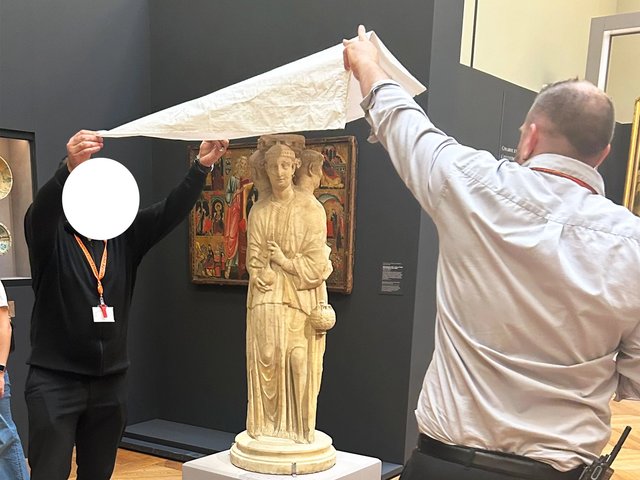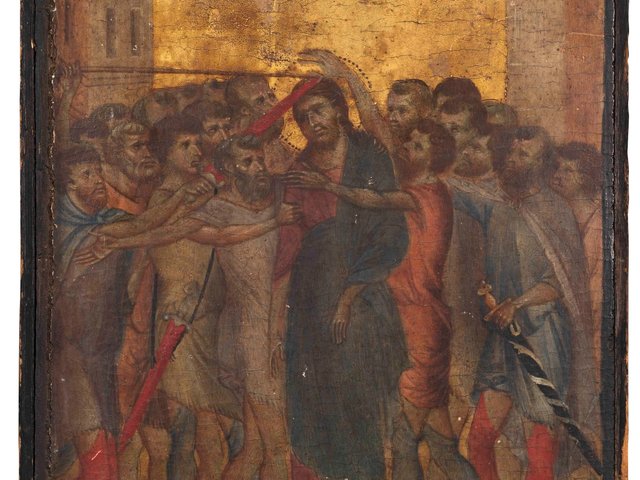For centuries, the Italian painter Cimabue has been overshadowed by his more famous pupil Giotto, who—with his attention to naturalism and perspective—is widely credited with ushering in the Renaissance. But a restoration project undertaken by the Musée du Louvre in Paris on Cimabue’s La Maestà (around 1280) is challenging these long-held assumptions, revealing how many critical innovations were already apparent in the work of the older painter.
La Maestà, more than four metres high, depicts an enthroned Madonna and Child surrounded by angels, with apostles, saints and other figures represented in the original frame. It was first mentioned by the artist and chronicler Giorgio Vasari in his Lives of the Artists, and arrived at the Louvre in 1813, having been looted from Italy by Napoleon’s troops.
The decision to embark on the restoration came after experts at the Louvre noticed that areas of the gesso applied to the painting’s edges during a 19th-century conservation were lifting off the surface. “The risk was that this non-original material, when lifting up, would take with it some part of the original painting,” says Thomas Bohl, the Louvre’s curator of Italian paintings from the 13th to 15th centuries. In 2015, a thorough examination revealed that the work was in a good structural state, but that “varnishes and overpaintings were extensively covering” the original work, he says. Conservation, funded by Linda and Harry Fath, members of the American Friends of the Louvre, began in 2022.

Cimabue’s La Maestà before the restoration
© 2007 Musée du Louvre/Angèle Dequier
The painting has been transformed in a number of ways. Most immediately, the Maestà’s colours have been revealed in their original glory: the dark cloak of the Virgin was found to be a vivid cobalt blue; the dull red of an apostle’s cloak is now gleaming pink. This has dramatically altered understanding of Cimabue’s early practice. “What is fascinating is that art historians have [previously framed] this painting as typical of the supposed early phase of Cimabue, which they thought was a phase of dark painting,” Bohl says. “After the cleaning, we cannot say this anymore.”
But just as important are the insights gained into the subtlety—and realism—with which Cimabue rendered the human figure, something that has previously been used to separate Giotto’s work from his master. Cimabue’s pioneering portrayal of transparency, for example, is revealed in the way the Christ child’s leg is now visible through the bottom part of his robes. “It’s also his way of shaping the bodies,” Bohl says, showing how, on the child’s foot, he varied his brushstrokes “just to give the feeling of [it]”.
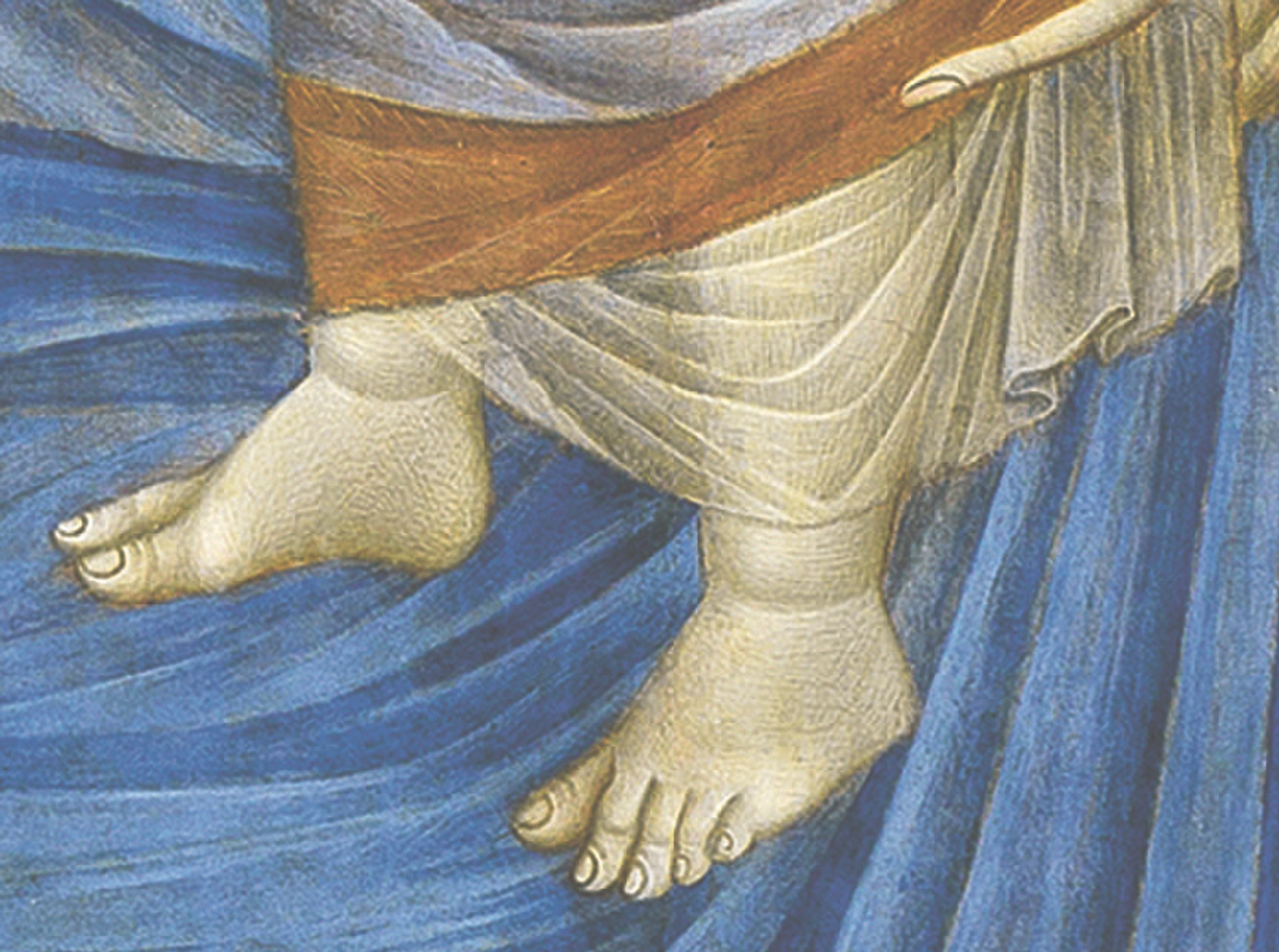
Cimabue’s skill in conveying transparency was made clear as part of the restoration
© C2RMF/Thomas Clot
Entirely new figures have been discovered in the original frame’s roundels: the Franciscan Saint Anthony of Padua, for instance, transformed at some stage into a female saint, has now reappeared at the bottom. At the top, the figure of the Blessing Christ is seen as it was originally painted, a more voluminous right hand raised to his chest.
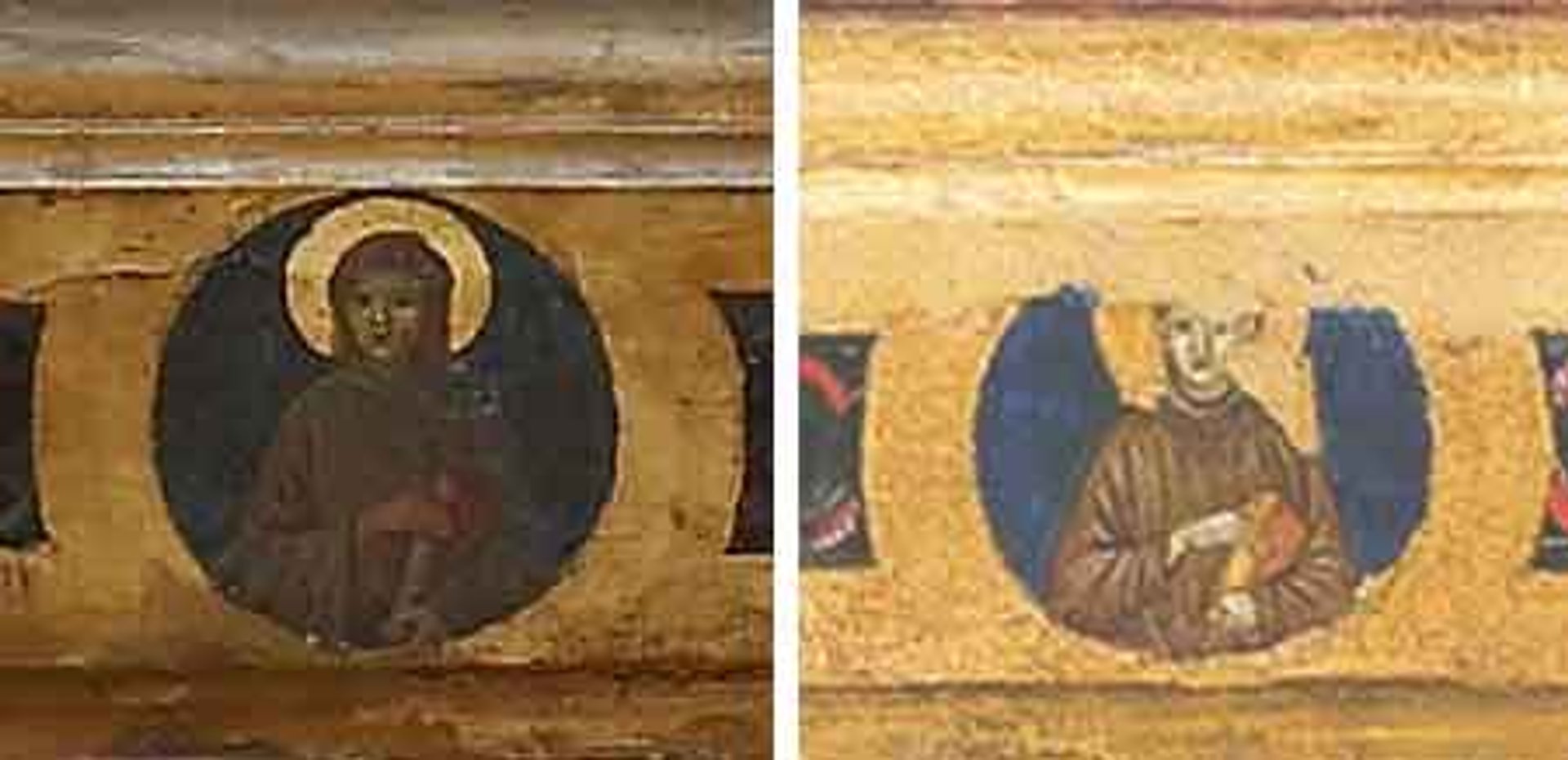
The restoration has revealed entirely new figures in the original frame’s roundels. One roundel previously featuring an image of a female figure (left) now once again depicts the Franciscan Saint Anthony of Padua (right)
Before restoration: © 2007 Musée du Louvre/Angèle Dequier. After restoration: © C2RMF/Thomas Clot
Other revelations are beginning to reshape understanding of the world Cimabue lived in and engaged with, including features emphasising his connection to Islamic art and design. Pseudo-Arabic script, for example, painted over in the 19th century, was found on the inner frame, created using a technique involving mercury and tin. Words already visible in the upholstery textile of the Virgin’s throne, meanwhile, were found to match those in artefacts from the Mamluk period (1250-1517), known to be widespread in Italy at the time.
“We thought that Giotto was the first to use this kind of pseudo-script, and use this rare technique, and now a new piece of the puzzle has arrived,” Bohl says. With his textiles, he adds, Cimabue “did something very new. He did not paint the idea of a textile. He painted a real textile with real inscription”.
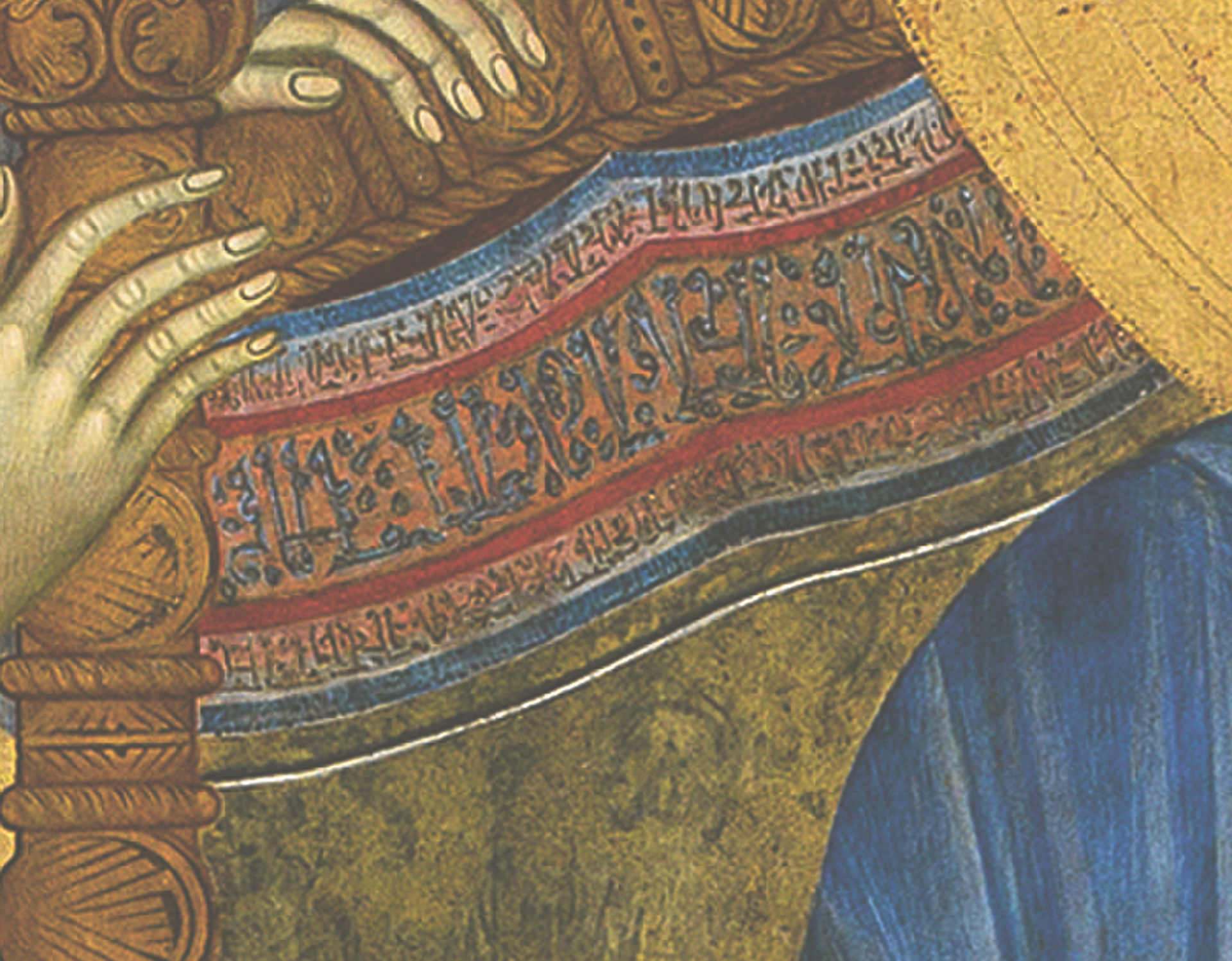
Words visible in the textile on the Virgin’s throne were found to match those used artefacts from Mamluk period (1250-1517)
© C2RMF/Thomas Clot
A devotional image
Separate but closely tied to the Louvre’s restoration has been a project assessing the original place of the Maestà—and Giotto’s Saint Francis Receiving the Stigmata (1295-1300)—within San Francesco, the Pisan church where it was housed for more than 500 years. Geo-radar scanning on similar buildings, archival research and indentations in the church’s walls suggest that there was likely once a choir screen positioned between the chancel and the nave, and that the two paintings would have likely been displayed over it, hung at a forward tilt on metal chains.

A reconstruction of the church of San Francesco, showing how La Maestà (left) and Giotto’s Saint Francis Receiving the Stigmata (right) may have been positioned. This research was completed by a team comprising Donal Cooper, Pierguiseppe Rechichi, Lucas Giles and Marco Bevilacqua
Courtesy of Pierguiseppe Rechichi, Lucas Giles, Donal Cooper and Marco Bevilacqua
“The reconstruction demonstrates the enormous scale of the Maestà, highlighting its role as a critical devotional image for worshippers entering San Francesco in the 13th century,” says Lucas Giles, a member of the research team from the universities of Cambridge and Pisa. Access to the top of the screen, he adds, would probably have allowed friars to study the paintings’ details up close.
The discovery of iron inlays believed to have served as supports for ring hooks during the Louvre’s conservation work reinforces the researchers’ findings. Bohl adds that it appears that Cimabue even “anticipated” the painting’s elevated, angled position, and increased the size of the angels’ haloes at the top of the painting. This was, Bohl says, “something very new in the art of painting”.
The Maestà will be a centrepiece of the exhibition A New Look at Cimabue: The Origins of Italian Painting, showing at the Louvre. The exhibition will unite the painting with Cimabue’s Mocking of Christ—discovered in a kitchen in 2019—and around 40 textiles, sculptures, icons and more with the aim of offering new insights into Cimabue’s place within art history and the culture of his time.
According to Bohl, the exhibition will force us to “completely review our vision of Italian painting of this time”. And while much about both Cimabue and his Maestà remains shrouded in mystery, one thing, he adds, has been made certain by its restoration. “When you look at almost everything that people had said about the inventions of [the Sienese painter] Duccio, of Giotto… we can see that, actually, Cimabue had already opened the path to these questions.”
• A New Look at Cimabue: The Origins of Italian Painting, Musée du Louvre, Paris, 22 January-12 May



